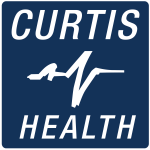This past week I did my annual CPR training. When I do this training, it is a great reminder to ensure my car is stocked in the event of an emergency. I thought I would share my list of must-haves for the car.
1. Seat Belt Cutter: In an emergency, such as a car accident where the vehicle flips or the seatbelt jams, a seat belt cutter can be a lifesaver. Ensure it’s mounted in an easily accessible location, so you can quickly grab it when seconds count. Familiarize yourself with its location; in a crisis, you may not have time to search for it.
2. Flashlight: A flashlight is indispensable, especially during nighttime emergencies. It can help you see better in low-light conditions, signal for help, or inspect damage after an accident. Opt for a flashlight with a long battery life or consider a hand-crank model that doesn’t rely on batteries at all.
3. Disposable Gloves: When providing first aid, protecting yourself is crucial. Disposable gloves are essential for creating a barrier between you and the injured person, preventing the spread of infections or contaminants. Keep several pairs in your kit, as you might need more than one pair in an emergency.
4. Blanket: A blanket serves multiple purposes: it can keep you warm if you’re stranded in cold weather, serve as padding if someone is injured, or even act as a makeshift stretcher. A thermal or emergency foil blanket is particularly useful, as it retains body heat effectively.
5. First Aid Kit: A well-stocked first aid kit is a non-negotiable item. Regularly check that it’s fully stocked with essentials such as bandages, antiseptic wipes, adhesive tape, scissors, pain relievers, and any personal medications you might need. Knowing how to use the items in the kit is just as important as having them, so consider taking a basic first aid course.
6. Emergency Water Bottles: Water is crucial for survival, especially if you’re stranded for an extended period. Keep at least a couple of emergency water bottles in your car, ensuring they’re made of durable material and stored in a cool, dark place. Rotate them regularly to ensure they remain fresh.
7. Dry Snacks: Non-perishable snacks like granola bars, nuts, or dried fruit can sustain you during long waits for help. Choose items that are high in energy and have a long shelf life. Be sure to check expiration dates and replenish your stock as needed.
8. Tourniquet: In the event of severe bleeding, a tourniquet can be a lifesaver. It’s designed to control significant blood loss when applied correctly. While this tool can be crucial, it requires proper knowledge and training to use effectively. Ensure you’re familiar with how to apply a tourniquet before adding one to your kit.
9. Life Straws or Water Purification Tablets: If you find yourself in a situation where you’re out of bottled water, a Life Straw or water purification tablets can make natural water sources safe to drink. These tools filter out harmful bacteria and contaminants, providing you with safe drinking water in emergencies.
10. Face Shields: Face shields are an important part of CPR and other medical interventions, protecting both you and the person you’re assisting from respiratory droplets and other contaminants. Keep a couple of these in your kit, especially if you regularly train in first aid or CPR.
11. Lighter or Matches: A lighter or waterproof matches are useful for starting a fire, which can be essential for warmth, signaling for help, or even boiling water. Store them in a waterproof container to ensure they work when you need them most.
You always want to be prepared for yourself and someone else in the event of an emergency. You will feel much better having your vehicle fully stocked.
MaryAnna xo
***********************************
MaryAnna Robbins CSEP-CPT, OFC RHEP – Group Exercise, Resistance Trainer, Yoga Fitness, Pilates Mat Fitness



